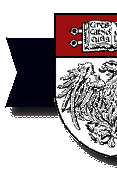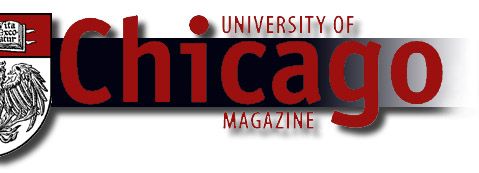|
Speaking figuratively,
U of C anthropology professor Manuela Carneiro da Cunha says she
wears three hats. Taking her literally, one might expect to find
a black-velvet beret, a wide-brimmed panama, and a metal helmet
hanging in her closet.
These she would alternately don as a French-educated intellectual
imparting lessons learned from Claude Lévi-Strauss, as a hands-on
expeditioner canoeing through the headwaters of the Amazon, and
as an international politico fighting for the rights of South America’s
traditional peoples.
At the moment, the helmet would be gathering dust, the panama getting
a fresh weave, and the beret resting, slightly tilted, on her auburn-haired
head as she compiles the results of a major study of rain-forest
conservation issues.
Carneiro da Cunha is spending spring quarter in São Paulo, Brazil,
editing the Forest Encyclopaedia. To be published later this year
with support from the Brazilian Ministry for the Environment, the
Encyclopaedia will include research conducted by Carneiro da Cunha
and her international team of anthropologists, biologists, demographers,
geologists, and ecologists during a five-year study of the first
land area in Brazil to be deemed an extractive reserve.
The concept of an “extractive reserve” was put forth in recent
years by groups who have traditionally lived in the rain forests
of Brazil and who have sought a socially fair approach to conservation
and economic development. Since 1990 the Brazilian government has
recognized 11 such reserves, protected lands that remain the living
and working sites for 21,000 people. But some policymakers and environmentalists,
skeptical that ecological balance can be sustained, have advocated
the eviction of the settlers.
Carneiro da Cunha’s pilot project, begun in 1993 with funding from
the John D. and Catherine T. MacArthur Foundation, seeks to help
resolve the question of the conditions under which the forest dwellers
can effectively be involved in conservation initiatives. The project
has focused on the inaugural reserve covering 5 million hectares
of the Juruá River basin in western Brazil. The reserve is home
to 6,000 people, mostly families of rubbertappers who extract materials
for making rubber by tapping trees dispersed throughout the rain
forest, just as their ancestors have done for the last century.
If the team of researchers can document that the rubbertappers have
been using—and will continue to use—the land in ways that improve
their quality of life as well as conserve the area’s biological
diversity, the team may be able to help the settlers stay on the
reserve and offer a model for similar groups.
Carneiro da Cunha’s pilot project, begun in 1993 with funding from
the John D. and Catherine T. MacArthur Foundation, seeks to help
resolve the question of the conditions under which the forest dwellers
can effectively be involved in conservation initiatives. The project
has focused on the inaugural reserve covering 5 million hectares
of the Juruá River basin in western Brazil. The reserve is home
to 6,000 people, mostly families of rubbertappers who extract materials
for making rubber by tapping trees dispersed throughout the rain
forest, just as their ancestors have done for the last century.
If the team of researchers can document that the rubbertappers have
been using—and will continue to use—the land in ways that improve
their quality of life as well as conserve the area’s biological
diversity, the team may be able to help the settlers stay on the
reserve and offer a model for similar groups.
Born in Portugal, Carneiro da Cunha grew up in Brazil the daughter
of an engineer father and a psychoanalyst mother. She graduated
in 1968 with a degree in mathematics from the Faculté des Sciences
in Paris and later attended anthropology seminars led by Lévi-Strauss.
Finding his structuralist approach to be a natural extension of
her studies in mathematics, she went on to earn her doctorate in
anthropology in 1975 from São Paulo’s University of Campinas, later
teaching there and at the University of São Paulo.
When Brazil’s military rule ended in the late 1980s, the country
began drafting a new democratic constitution. As president of the
Brazilian Anthropological Association and a board member of the
Brazilian Science Council, Carneiro da Cunha helped lead a coalition
of academic institutions that won a constitutional chapter guaranteeing
extensive land rights for traditional peoples.
“As an anthropologist, I had a specific expertise on indigenous
issues,” she says. “Every anthropologist in Brazil felt a commitment
to the people they were working with, and whose problems and claims
they could help take to a public arena.”
She also helped rebuild Brazil’s universities as centers of intellectual
thought. At the University of São Paulo, she founded a center for
the study of traditional peoples. In 1992, she edited the center’s
History of Indians in Brazil, a comprehensive documentation of the
ties of traditional peoples to certain land areas in the country.
In 1994, Carneiro da Cunha came to the U of C ready to enjoy a
“retreat” from intense political activism and a return to more purely
academic pursuits. She works with the Latin American Studies Center
and teaches courses on the rights of traditional peoples and tangential
interests, such as historical representations of images, icons,
and idols. Yet she still finds time to get out of Haskell Hall and
back into the field. This summer, as she tries to do at least once
each year, she plans to travel by plane for two days and by boat
for three to the Juruá reserve.
In addition to compiling the Encyclopaedia, which will chronicle
the rubbertappers’ use of the land and their knowledge of it, the
team plans to release this month a general assessment of the project,
offering data on the plant and animal species they have catalogued.
Carneiro da Cunha says the initial findings show the rubbertappers
have not merely helped to preserve biodiversity but have allowed
it to flourish. For example, she says, in just 62 days, the team
counted 612 bird species on the re-serve, compared with the record
held by a nearby area in Peru, where it took 1,000 days to identify
560 species. The team has also been working to establish ecological
monitoring methods, create zones for controlled extraction, develop
forest-management training programs, and secure local intellectual-property
rights for resources found on the reserve.
“This project was not just for biological science,” says Carneiro
da Cunha. “If we can prove that the rubbertappers’ use of the land
is successful and that the federal government can spend less money
running these areas by letting the traditional peoples manage them,
then we have findings that are important for policy.”
Meanwhile, Carneiro da Cunha was recently asked to advise the United
Nations Conference for Trade and Development, a permanent Geneva-based
body. And she plans to help implement the U.N.’s Convention for
Biological Diversity, adopted by 171 nations at the 1992 Earth Summit
in Rio de Janeiro to promote the sustainable use of resources worldwide.
Looks like she’s ready to dust off that helmet.—C.S.
|



